
Network-guided discovery of transcription factors epistasis in glucosinolate biosynthesis (Plant Cell)
Blog, Plant Science Research Weekly, Research, Research BlogPlant Cell. Li et al. studied epistatic (non-additive) interactions amongst the network of transcription factors controlling aliphatic glucosinolate biosynthetic pathways, which are well-described and have diverse roles in plant defense. Specifically, the authors measured metabolite levels and transcript…
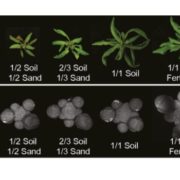
Nutrient modulation of Arabidopsis shoot apical meristem dynamics (PNAS)
Blog, Plant Science Research Weekly, Research, Research BlogProc. Natl. Acad. Sci. USA. The shoot apical meristem (SAM) is essential for the adaptation of aerial plant tissue architecture to changes in the environment. This paper by Landrein and colleagues connects changes in the plant environment (soil type, soil fertility, nitrate concentration) to changes…
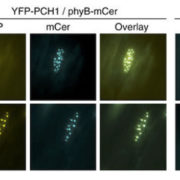
Supression of phyB dark reversion by PCH1 and PCHL (Nature Comms.)
Blog, Plant Science Research Weekly, Research, Research BlogNature Comms. Phytochromes can exist in two states: an inactive state Pr and an active state Pfr. They convert into each other by light absorption. They can also revert to the inactive state by a light-independent thermal relaxation process called dark reversion. Phytochrome B is the primary receptor…
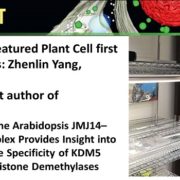
Recognizing featured Plant Cell first authors: Zhenlin Yang
Blog, Research, Research Blog, The Plant Cell, The Plant Cell: Author ProfilesZhenlin Yang is featured first author of Structure of the Arabidopsis JMJ14-H3K4me3 Complex Provides Insight into the Substrate Specificity of KDM5 Subfamily Histone Demethylases
Current Position: PhD Student, Shanghai Center for Plant Stress Biology, Shanghai Institutes for Biological Sciences, Chinese…
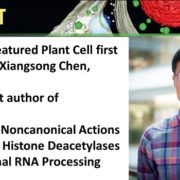
Recognizing featured Plant Cell first authors: Xiangsong Chen
Blog, Research, Research Blog, The Plant Cell, The Plant Cell: Author ProfilesXiangsong Chen is the featured first author of Canonical and Non-canonical Actions of Arabidopsis Histone Deacetylases in Ribosomal RNA Processing
Current Position: Postdoctoral fellow in Wisconsin Institute for Discovery, University of Wisconsin-Madison
Education: PhD in National Key Laboratory…

Transposon-derived small RNAs triggered by miR845 mediate genome dosage response in Arabidopsis
Blog, Plant Science Research Weekly, Research, Research BlogNat. Genet. Silencing of transposable elements (TEs) is mediated epigenetically by DNA methylation, relying partially on RNA-directed DNA methylation (RdDM). RdDM-induced DNA methylation undergoes a global reprogramming in the male germline, allowing expression of imprinted genes regulating fertility…
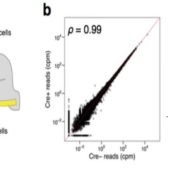
SLAM-ITseq: Sequencing cell type-specific transcriptomes without cell sorting
Blog, Plant Science Research Weekly, Research, Research BlogBioRxiv. Transcriptomic changes at the cellular level are of key importance in specialized cellular types. Therefore, transcriptome analysis at a cell-specific resolution is a powerful tool to learn about biological processes. This analysis is however limited by technological boundaries of microdissection…
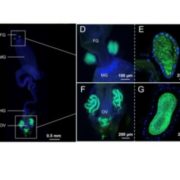
Drastic genome reduction in an herbivore’s pectinolytic symbiont
Blog, Plant Science Research Weekly, Research, Research BlogCell. In a very interesting report, Salem et al., showed evidence of an alternative mechanism supporting how the degradation of pectin, a very hard to metabolize component of the cell wall, has directed the evolution of herbivory in insects and arthropods. Recent reports have indicated that horizontally…
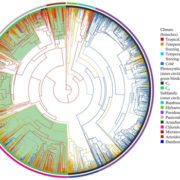
C4 photosynthesis evolved in warm climates but promoted migration to cooler ones
Blog, Plant Science Research Weekly, Research, Research BlogEcol. Lett. C4 photosynthesis represents a biochemical CO2-concentrating mechanism that increases Rubisco-mediated carboxylation of RuBP and reduces photorespiration. However, there is an energy cost associated with C4 photosynthesis, and so it is presumed to become advantageous over C3 photosynthesis…

